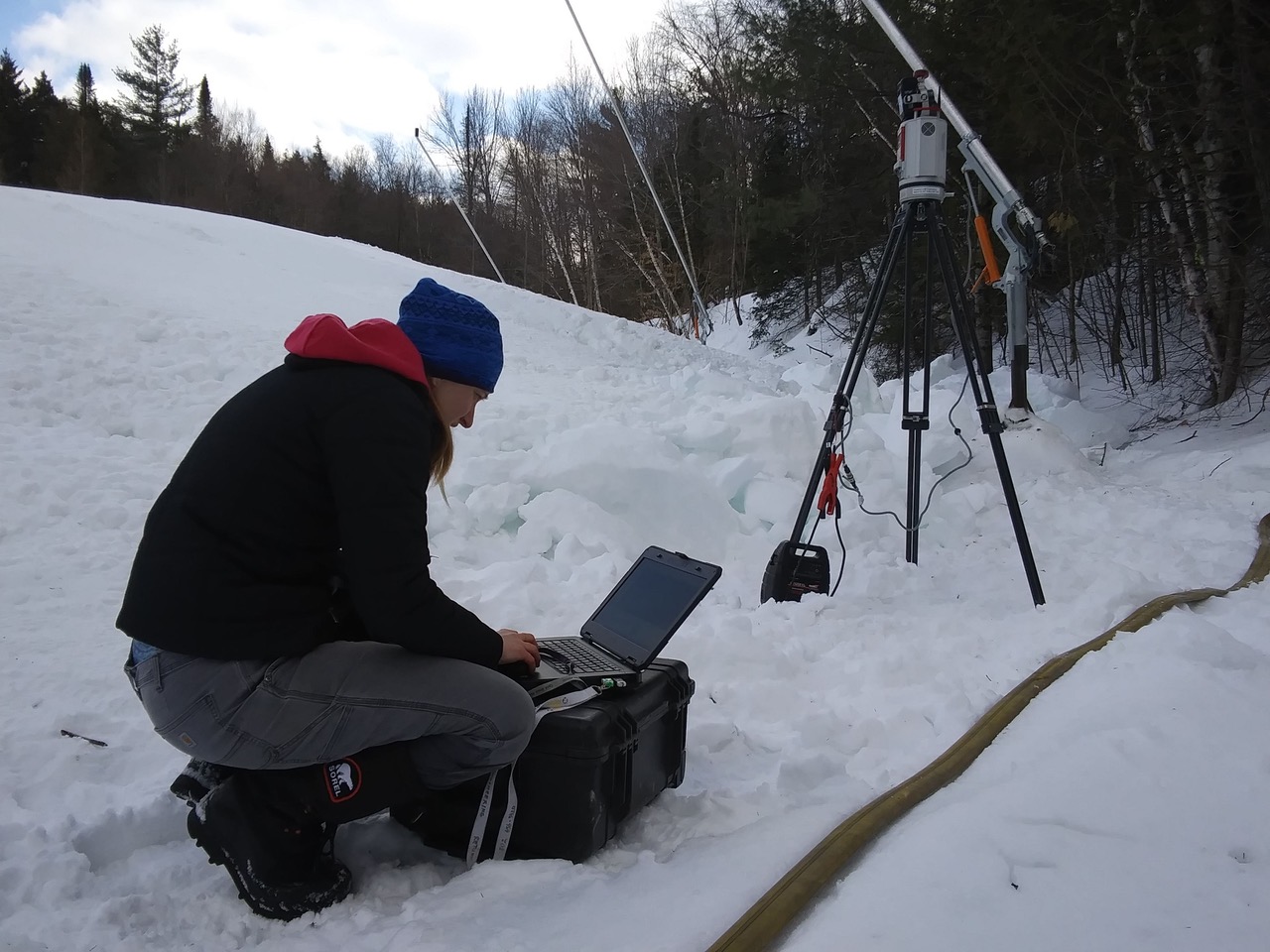Snow Storage 2020: Scaling Up
UVM grad student Hannah Weiss gathering data at the snow pit, spring '19.
UVM Geology professor - and Craftsbury member - Paul Bierman has been working with students and the Center to bring snow storage to Craftsbury, similar to what's done in Canmore, AB and other Nordic ski venues. UVM grad student Hannah Weiss has recently published a paper on her work in the project which underpins 2019's efforts to scale the snow saving up to a point that we can cover several kilometers this November. Paul summarizes the paper for laypeople below.
Knocking down the snow piles into the storage pit.
Any of you who have skied around Lemon’s Haunt could hardly have missed the pile of snow in what used to be Wilbur’s pond over the past month. This is next November’s base. If the science pans out (and we think it will - any bets out there?), there will be enough snow left in the fall to lay down a solid base on several kilometers of trail whether or not November is cold like 2018 or warm like some of those unmentionable years before.
Some of you might remember summer 2018’s little snow piles buried under wood chips – those were a test project between UVM and the Outdoor Center. They worked (well, sort of, we still had enough snow in October when the first flurries flew to make a couple iceballs or even a small ice man). But that was not their purpose – rather, they let us test how to store snow effectively in a climate as warm and humid as Craftsbury in the summer. All the data collected last summer are now compiled in a paper that Hannah Weiss, the UVM graduate student doing this work as part of her thesis, just submitted for publication. Read a draft of that paper here.
What did we learn – in a nutshell:
• Three layers of insulation is way better than one or even two. To save snow, cover it with an insulating blanket, then a layer of wood chips, they a space blanket to reflect the bright summer sun.
• Dense snow is way more durable than lighter snow. Lucas, Eric, and Keith have done an amazing job with a new set of energy efficient snow guns that take only pressurized water, not air, to make snow. It’s not the powder that they make up on the soccer fields, no, this is more like solid April crud that falls just above freezing and brings down powerlines. It’s dense, about 5 times denser than the fluffy stuff of January. That’s good for storage because it won’t settle much in the pile and it takes more energy to melt dense snow than the same volume of the fluffy stuff.
Lidar measurements of snow volume.
So keep an eye on the pile this summer. We hope to have a series of temperature sensors live on the web so you can see how it’s doing and we’ll do our best to update the project website with what we learn. And you can send any questions to me and to Hannah.
Paul Bierman, UVM Geology and Natural Resources



